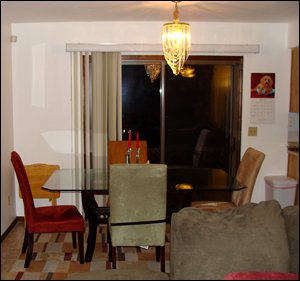 Choosing paint colors for dark rooms is a real decorating dilemma! Choose a dark color and you might end up feeling like you live in a dungeon, choose a color that is too light and you will think you live in the land of the bland!
Choosing paint colors for dark rooms is a real decorating dilemma! Choose a dark color and you might end up feeling like you live in a dungeon, choose a color that is too light and you will think you live in the land of the bland!
So your first step will be to determine why your room is so dark and what, if anything, there is you can do to remedy the situation.
- Does the room have a Northern exposure? Installing/adding more lighting sources will dramatically improve the room’s ambiance.
- Are there trees blocking the light? If so, can they be trimmed or removed?
- Are your windows covered with layers of drapes? Decide how your windows will be dressed when the room is complete and make changes to your decorating plans now, to get a realistic picture of the amount of light available in the room.
Addressing these issues well before you even step your foot into a paint store will save you a lot of aggravation – you don’t want to discover the paint you fell in love with is entirely the wrong choice for the room! It will also save you hours of repainting and gallons of wasted paint.
The Goldilock’s approach to coloring dark rooms
When it comes to painting dingy spaces, here’s one thing to remember: you can choose any color of paint you want. But what will make a critical difference though is the value (or lightness/darkness) of the color you choose on the color chart.
Too dark
If you choose a deep, dark color, your room will just feel even darker and gloomier. The dark colors will lose their rich, satisfying intensity and become “muddy” on the walls when there is no sunlight to bring out their depth.
Too light
Since too dark is not the right choice, maybe very light would work better? Actually, a color that is too light will look gray and even “dirty” in a room with little or no natural light (due to all the shadows). It will do nothing to help make the room lighter and you will still find yourself turning on the artificial lights when walking into the room, no matter what time of day it is.
Just right!
So what are we left with then? It’s a compromise: your paint color choice for a poorly lit room should come from the middle, or one shade above or below the middle of the color strip. The mid-tones have just enough color to make them come alive during the daylight hours, and enough warmth and character to shine at night under artificial lighting.
Test this approach in your own home and you will see for yourself that using mid-tone shades is the most successful way to create inviting atmosphere and add color to dark rooms.
About the author: Yelena Kublitski offers more tips on choosing the right paint colors for your home in the Interior Paint Color Guide.